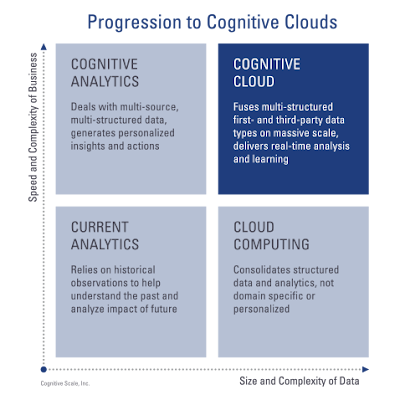Twitter Feed
VMware lays out roadmap to the clouds.
Earlier this year, Diane Greene, VMware President and Co-Founder, described cloud computing as the final evolutionary step for virtualization. Reza Malekzadeh, Senior Director of Products and Marketing reinforced that view…
Mario Dal Canto at Virtualization Conference & Expo 2008 East
According to Mario Dal Canto, “Virtual Cloud Computing represents the next wave of virtualization and offers significant market opportunities by providing a new, simpler, and much more pervasive platform for…
Microsoft cloud fits and starts.
Microsoft’s dance with cloud comuting is very puzzling. Point 1: The June 5th Wall Street Journal article discusses the friction between Steve Ballmer and Bill Gagtes over NetDocs, described by…
Salesforce.com & Google
A short promotional video on Salesforce and the Google cloud. Follow me at https://Twitter.com/Kevin_Jackson
Gamers now have their own cloud.
Valve, a Bellevue, Washington based entertainment software and technology company, recently announced that they will use the cloud computing paradigm as their next major update. Called “Steam Cloud” the service…
Is IBM serious about cloud computing?
Last week in Eye on the Enterprise, Joe McKendrick, highlighted IBM VP Steve Mills’ apparently less than enthusiastic statement regarding cloud computing. In an April 30th interview with CNET’s Dan…
VMware and Cloud Computing
VMware President and Chief Executive Officer Diane Greene,in her keynote address at the JP Morgan Technology Conference in Boston, described cloud computing as the final evolutionary step for virtualization. In…
DISA Cloud Computing Plans
During last month’s Defense Information Systems Agency (DISA) Partnership Conference, cloud computing debuted as a “top priority” for senior leadership. Speakers described a future state when users would access computing…
The Cloud Computing Portal
The Cloud Computing Portal is a community edited database that makes the cloud vendor selection process easier, by helping you find a cloud provider who supports the environment you need.…
HP in the Cloud
In “HP weds cloud…” , Hewlett-Packard has apparently outlined their approach to cloud computing. They are merging their high-performance computing unit with the Web 2.0 and cloud computing infrastructure businesses.…
According to the IBM Institute for Business Value the market will see a rapid adoption of initial cognitive systems. The most likely candidates have moved beyond descriptive and diagnostic, predictive and routine industry-specific capabilities. 70 percent of survey respondents are currently using advanced programmatic analytics in three or more departments. In fact, the widespread adoption of cognitive systems and artificial intelligence (AI) across various industries is expected to drive worldwide revenues from nearly US$8.0 billion in 2016 to more than US$47 billion in 2020.
The analyst firm IDC predictsthat the banking, retail, healthcare and discrete manufacturing industries will generate more than 50% of all worldwide cognitive/ AI revenues in 2016. Banking and retail will each deliver nearly US$1.5 billion, while healthcare and discrete manufacturing will deliver the greatest revenue growth over the 2016-2020 forecast period, with CAGRs of 69.3% and 61.4%, respectively. Education and process manufacturing will also experience significant growth over the forecast period.
th’s ability to replicate intuitive experiences provides a number of opportunities within sentiment analysis. With its ability to understand scenes and context, it can decipher how people are feeling based off facial expressions or voice stress levels.
- Need robust and simplified data classification processes in order to more easily deliver industry and business model specific value;
- Require the implementation of information technology security controls that are driven by data value and role based access control paradigms; and
- Leverage software applications that should be developed using ISO 27034 which is a multi-part standard on specifying, designing/selecting and implementing information security controls through a set of processes integrated throughout an organization’s Systems Development Life Cycle/s (SDLC).
( Thank you. If you enjoyed this article, get free updates by email or RSS – © Copyright Kevin L. Jackson 2016)
Cloud Computing
- CPUcoin Expands CPU/GPU Power Sharing with Cudo Ventures Enterprise Network Partnership
- CPUcoin Expands CPU/GPU Power Sharing with Cudo Ventures Enterprise Network Partnership
- Route1 Announces Q2 2019 Financial Results
- CPUcoin Expands CPU/GPU Power Sharing with Cudo Ventures Enterprise Network Partnership
- ChannelAdvisor to Present at the D.A. Davidson 18th Annual Technology Conference
Cybersecurity
- Route1 Announces Q2 2019 Financial Results
- FIRST US BANCSHARES, INC. DECLARES CASH DIVIDEND
- Business Continuity Management Planning Solution Market is Expected to Grow ~ US$ 1.6 Bn by the end of 2029 - PMR
- Atos delivers Quantum-Learning-as-a-Service to Xofia to enable artificial intelligence solutions
- New Ares IoT Botnet discovered on Android OS based Set-Top Boxes



